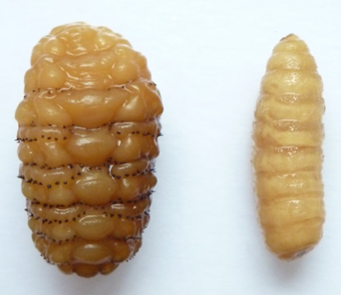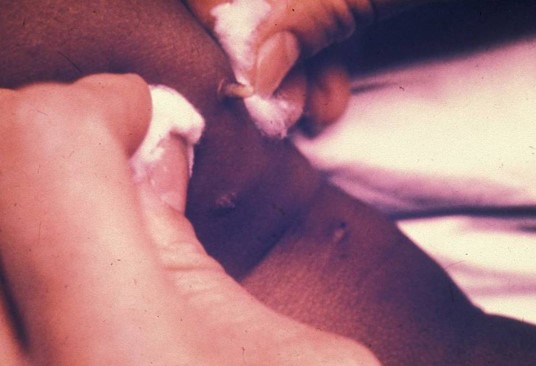Introduction to Diagnostic Medical Parasitology
Essentials
Myiasis refers to the infestation of human tissue by fly larvae, commonly known as maggots. This condition is prevalent in tropical and subtropical regions. In the United States, myiasis is seldom encountered; it's more commonly contracted when individuals visit tropical areas in Africa and South America. Those traveling with untreated open wounds are at a higher risk of contracting myiasis. Medically, the removal of fly larvae typically requires surgical intervention performed by a healthcare professional.

Epidemiology
- Myiasis is prevalent in tropical and subtropical regions
- Encompassing countries within:
- Central America
- South America
- Africa
- The Caribbean Islands
Clinical Findings
- Myiasis is diagnosed by detecting fly larvae within the tissue.
- To determine the genus or species, specific morphological features on the larvae are compared. These include the anterior and posterior spiracles, mouthparts, cephalopharyngeal skeleton, and cuticular spines.
Diagnosis
Surgical extraction by a medical professional is necessary to remove the larvae. After their removal, the wound is usually cleansed daily. Maintaining proper hygiene of the affected area is crucial in myiasis treatment. In some cases, medication might be prescribed, depending on the type of larvae causing the issue.

Prevention and control
Exercise caution when visiting tropical regions and spending extended periods outdoors. Cover your skin adequately to minimize exposure to bites from flies, mosquitoes, and ticks. Employ insect repellent and adhere to the guidelines provided by Travelers Health. In regions where myiasis is prevalent, safeguard yourself by utilizing window screens and mosquito nets.
In tropical areas, it's advisable to iron any clothes that have been air-dried on a line.